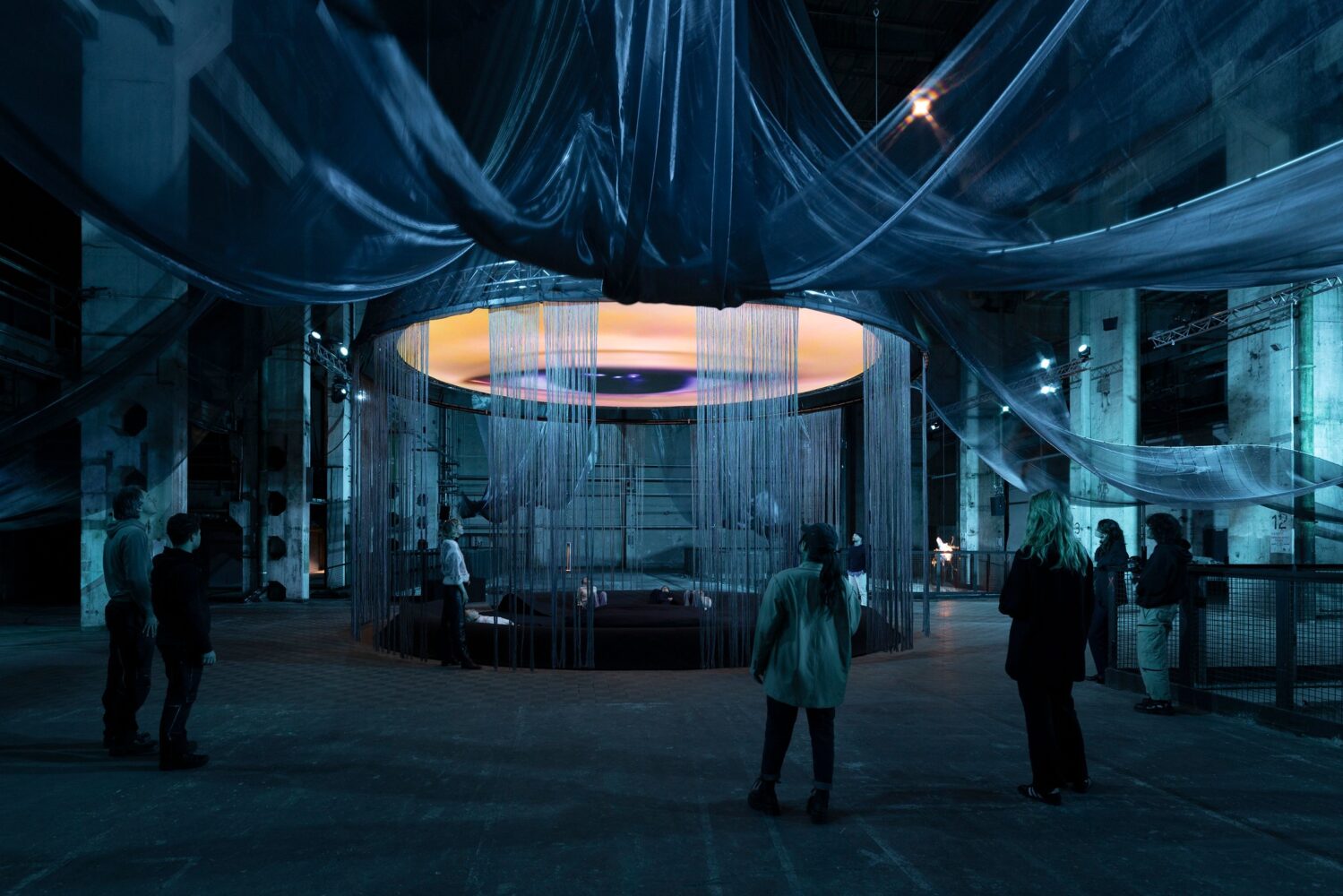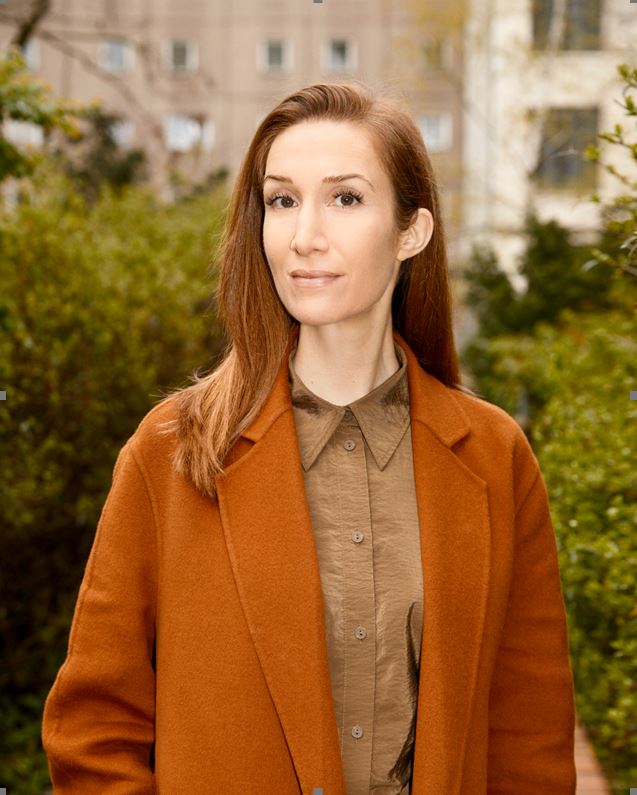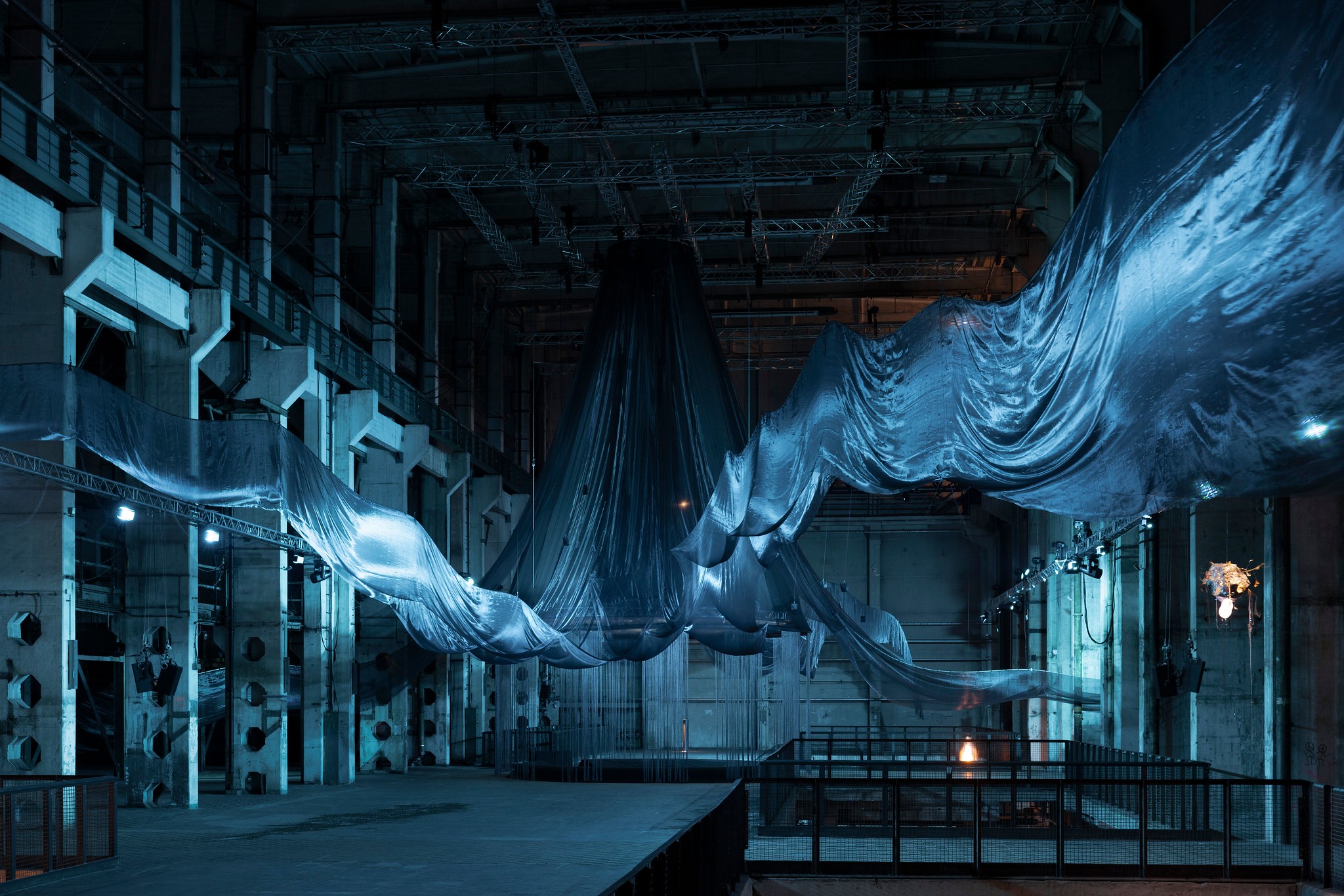The LAS Art Foundation’s Sensing Quantum project has been awarded the S+T+ARTS Grand Prize – Innovative Collaboration for its groundbreaking work in developing new pathways into quantum technology through immersive experiences and interdisciplinary collaboration.
S+T+ARTS (Science + Technology + Arts) is an initiative of the European Commission that promotes collaboration between technology and artistic practice to drive innovation and address societal, environmental, and economic challenges. As part of the initiative, a prestigious prize worth €40,000 is awarded to projects that provide significant impetus for economic and social innovation at the intersection of science, technology, and art. This year, the LAS Art Foundation’s “Sensing Quantum” project has been awarded the Grand Prize – Innovative Collaboration.
“Quantum technologies are changing our world, yet their complex nature often makes them inaccessible and difficult for many people to grasp.”
The LAS Art Foundation’s Sensing Quantum program unites artists, scientists, and the public to develop novel approaches to innovative technologies. Through interdisciplinary collaboration and multisensory experiences, the program fosters critical engagement, creative innovation, and inclusive dialogue about the ethical, social, and political implications of quantum research. To gain a deeper understanding of the project, we spoke at length with Carly Whitefield, the senior curator at the LAS Art Foundation.
The project Sensing Quantum attempts to make the invisible visible and the complex tangible. How do you deal artistically with the translation of concepts from quantum physics into a tangible form?
Carly Whitefield: The LAS Art Foundation’s Sensing Quantum program brings together artists, scientists, and thinkers to develop critical and artistic languages around the evolving field of quantum technologies. It’s critical to us to enable artists to engage with these technologies in their early stages of development and to bring the public into the conversation by shaping their encounters with the resulting artworks.
In commissioning these works, we first acknowledged that, in the broader public imagination, quantum is often encountered via sensational media headlines focused on geopolitical competition. To engage broad audiences, we must build bridges into this world since quantum physics and the new technologies based on its principles are quite complex.
We build these bridges by crafting journeys that open perspectives in perceptual and embodied ways. This lowers the barriers to engagement with an intangible topic like quantum and opens something wholly new: a quantum imaginary. We believe that creating a language and a feeling for quantum is an important first step. We collaborate with artists like Laure Prouvost, who creates multisensory environments that pull you into worlds structured by new logics and relationships in playful and powerful ways.

Her commissioned work, “WE FELT A STAR DYING” (2025), is influenced by quantum concepts and direct experimentation with quantum tools, resulting in multiple levels of translation. One key example is the project’s initial experimentation with using quantum noise in a generative AI model. Unlike classical types of noise used in AI, quantum noise does not conform to a mathematical model and therefore could not be predicted by the AI. This resulted in an uneven process of denoising the video and sounds that we ran through the model, yielding unusual effects and opening moments when quantum indeterminacy shaped the pixels and sounds audiences experience.
Interdisciplinary exchange is at the heart of Sensing Quantum. How has collaborating with experts in science, art, technology, and philosophy changed your perspective on artistic work?
Carly Whitefield: LAS draws great inspiration from the rich history of interdisciplinary collaborations forged across these fields, from Bauhaus and Experiments in Art and Technology (E.A.T.) to current residency models. For me personally, studying these histories is very different from being an active part of these exchanges, where you have the privilege of experiencing the full breadth of perspectives and ideas that emerge, only some of which may gain representation in an artwork.
“The most crucial point is that these collaborations have the potential to be truly multi-directional and mutually beneficial in their impact: they are not solely in place to enrich an artistic project, rather, artists should have the agency to co-innovate, surface latent potentials, and open new ethical and imaginative dimensions within these fields. ”
The partnerships we establish with experts in science, technology, and philosophy guide the research and development phase of our projects. We place strong emphasis on the value of this R&D phase, by allocating sufficient time and resources to forge meaningful exchanges and by keeping the process open to various paths and formats. After a project proposal emerges, we begin a new round of interdisciplinary exchange by inviting additional collaborators, such as scenographers, sound and lighting designers, media specialists, fabricators, and accessibility consultants, into the conversation. The result, which we might call “artistic work” in this context, is shaped by many minds and disciplines.
How do you think art can contribute to initiating or even actively shaping a public discourse on quantum research and its social implications?
Carly Whitefield: Public discourse often lags behind technical development, especially in fields such as quantum research, where knowledge is highly specialized, and access is limited. We therefore see a timely opportunity for art to help build a public imaginary around quantum technologies as they emerge — one that’s not only reactive, but also formative. Art can help shift the discourse away from narrow narratives of innovation and competitiveness and toward more plural, situated, and ethically engaged conversations.
To engage audiences in this field, we shape visitor journeys that begin with sensory encounters with artworks and are then supported by a number of ways to learn more about quantum principles, the technologies they are inspiring, and what’s at stake. For our presentation at Kraftwerk Berlin earlier this year, we created a learning space titled Entangled Currents, where audiences could gain insights into the projects presented in the space via video interviews with artists and project collaborators, engage with a constellation of quantum ideas via magnetic cards, read related books, explore a model of a superconducting quantum computer, and even experiment with creating sound on a synthesizer premised on the operation of quantum bits and quantum algorithms. This was complemented by a series of workshops for schools and families, as well as talks that explored the implications of quantum computing from philosophical, geopolitical, ethical, scientific, social, and artistic perspectives. This multi-pronged approach to outreach is a cornerstone of our Sensing Quantum program and its goal of engaging audiences in the conversation about early-stage technologies.

What role does immersion play in your work – especially with regard to Sensing Quantum’s goal of making complex technologies accessible and tangible to a broad audience?
Carly Whitefield: It’s fair to say that immersion has become a buzzword to the point of exhaustion, but there’s a reason why multi-sensory environments can have such a powerful effect. Rather than being about spectacle, it’s a way of creating conditions for different kinds of thinking and feeling. When dealing with something as abstract and complex as quantum technology, immersion allows us to move beyond explanation and into experience. It invites audiences to inhabit forms of uncertainty, relationality, or indeterminacy, to feel the dynamic ways systems behave, and to reflect on their own entanglement within larger structures.
Ultimately, immersion becomes a tool for accessibility not by simplifying the science, but by offering alternate ways in — sensory, emotional, spatial — that open up curiosity and critical engagement.
“Immersion makes space for intuition and speculation and allows people to relate to quantum technologies as something already shaping the world we live in, not as something distant or purely technical.”
What do you hope to gain from the dialogue between art, science, and the public that Sensing Quantum initiates – and how might this exchange influence our relationship to an increasingly technological world?
Carly Whitefield: When artists, scientists, and the public engage in conversation, it becomes possible to think through both the possibilities and implications of emerging technologies and to challenge dominant narratives of inevitability or neutrality around technological progress. We begin to ask different questions — not just what is possible, but also what is desirable and for whom. This kind of exchange is especially important when corporations influence not only development but also regulation. In the context of quantum technologies, these dialogues are crucial in shaping public agency and awareness before the infrastructures are fully locked in.
The LAS Art Foundation’s Sensing Quantum project will be presented at the Ars Electronica Festival in Linz from September 3 to 7, 2025. As winner of the Grand Prize – Innovative Collaboration, the work is part of the STARTS exhibition at POSTCITY. There, visionary projects at the intersection of science, technology, and art will be presented. Visit the festival website for the latest project information and other program highlights.

Carly Whitefield
Carly Whitefield is Senior Curator at LAS Art Foundation, Berlin. Since joining LAS in 2023, she has curated the projects Laure Prouvost: WE FELT A STAR DYING (2025, Kraftwerk Berlin), Josèfa Ntjam: swell of spæc(i)es (2024, Collateral Event of the 60th International Art Exhibition – La Biennale di Venezia), Lawrence Lek: NOX (2023, Kranzler Eck, Berlin), Marianna Simnett: GORGON (2023, HAU2, Berlin), and Alexandra Daisy Ginsberg: Pollinator Pathmaker (2023–26, Museum für Naturkunde Berlin). She previously worked as Assistant Curator, International Art, at Tate Modern, London, and Editorial and Research Associate at Oslo Pilot.
